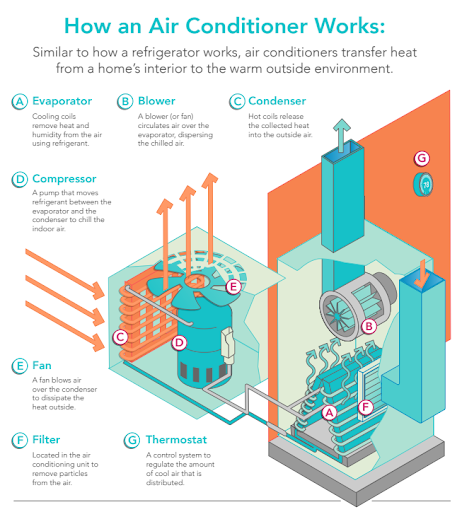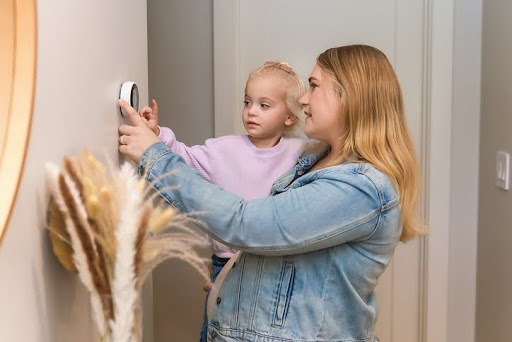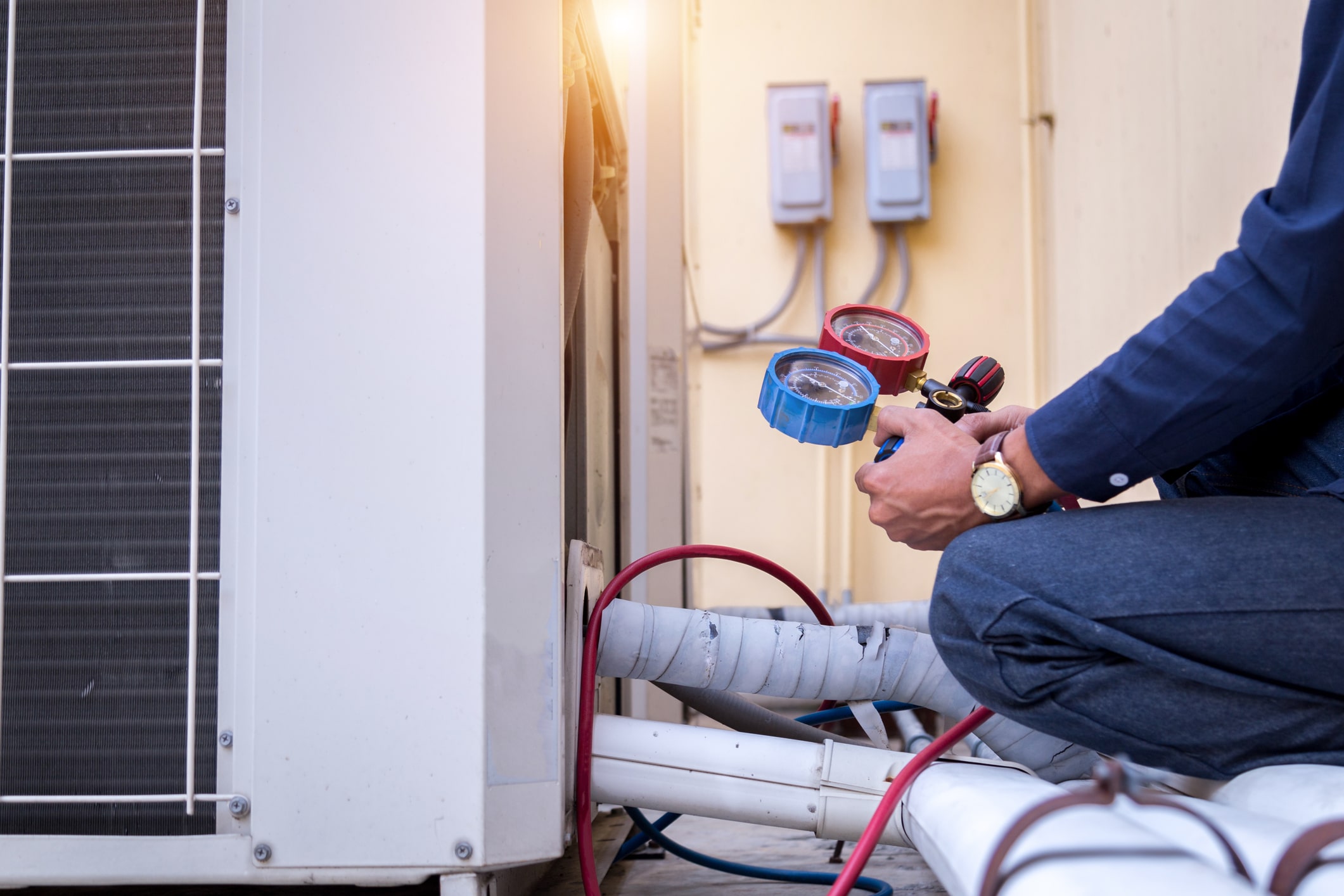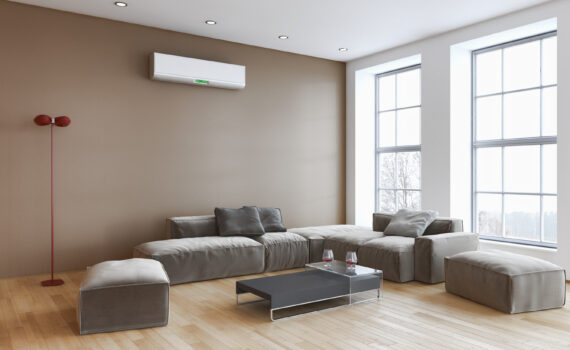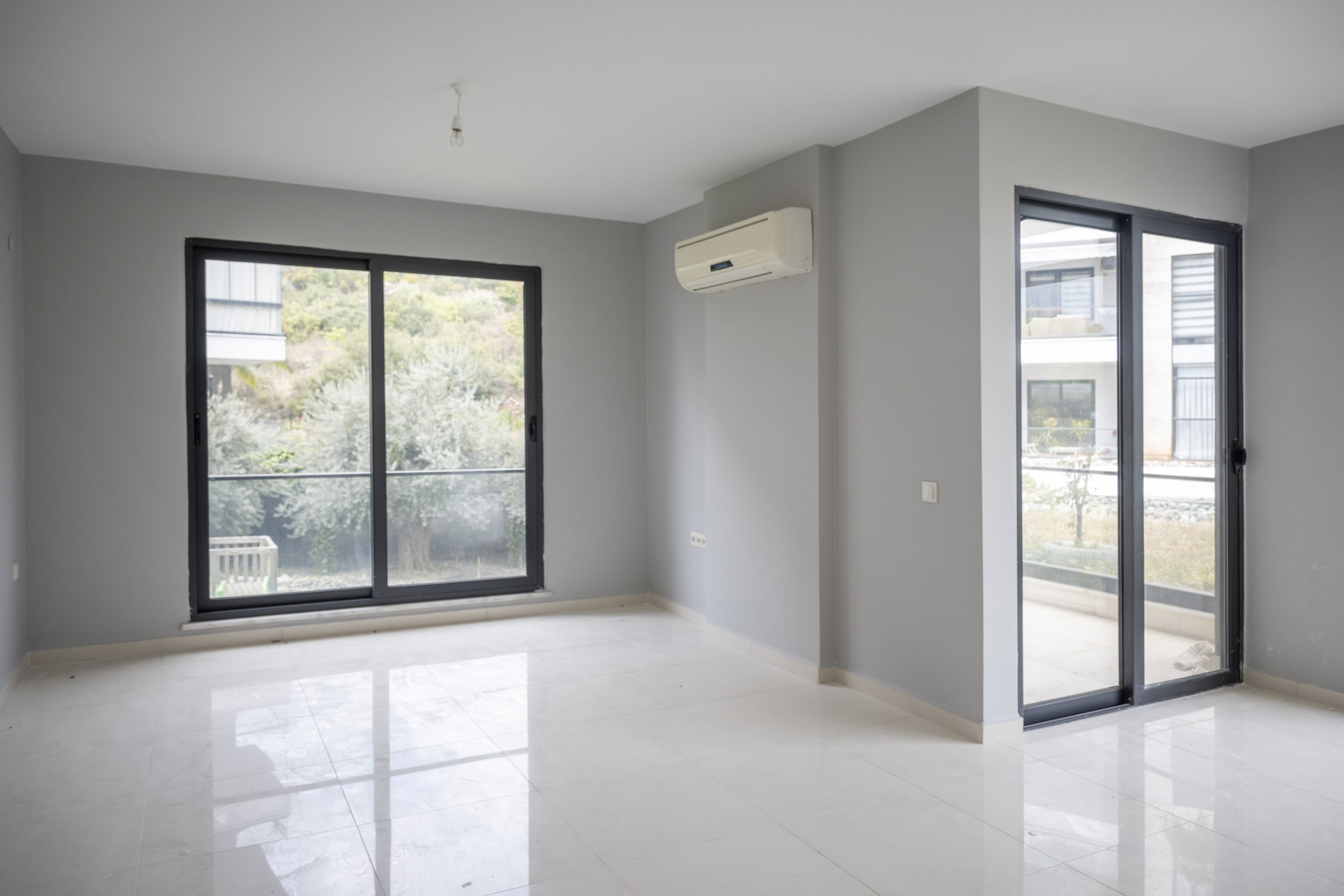
How Does AC Work In A House?
Source: U.S. Department of Energy – Energy Saver 101 Infographic
Air conditioning systems work by removing heat and humidity from the indoor air to create a cooler and more comfortable environment. Using a combination of refrigerants, coils, and fans, an AC system absorbs heat from your home, transfers it outside, and circulates cooled air back inside. This continuous cycle ensures that your home stays comfortable, even on the hottest days.
Understanding the Basics of Air Conditioning
Air conditioners don’t “add cold air” to your home; instead, they work by removing heat from the air. This process is facilitated by a refrigerant—a chemical that alternates between liquid and gas states to absorb and release heat. The key components involved include:
1. The Refrigerant
Refrigerant is the lifeblood of your AC system. It absorbs heat from indoor air and carries it outside, where it is released into the atmosphere. Common refrigerants include R-410A and the now-phased-out R-22.
2. The Evaporator Coil
Located inside your home, the evaporator coil contains refrigerant. Warm indoor air passes over the coil, and the refrigerant absorbs heat, cooling the air. This cooled air is then circulated back into your home.
3. The Compressor
The compressor is located in the outdoor unit. It increases the pressure and temperature of the refrigerant, turning it into a high-pressure gas that flows to the condenser coil.
4. The Condenser Coil
Also located in the outdoor unit, the condenser coil releases the heat absorbed by the refrigerant. A fan blows outdoor air over the coil to help disperse the heat, cooling the refrigerant and turning it back into a liquid.
5. The Expansion Valve
The expansion valve regulates the flow of refrigerant into the evaporator coil, reducing its pressure and temperature to restart the cooling cycle.
The Air Conditioning Cycle
- Heat Absorption: Warm indoor air is drawn into the AC system and passes over the evaporator coil. The refrigerant absorbs the heat, leaving the air cool.
- Compression: The refrigerant, now a low-pressure gas, flows to the compressor, which compresses it into a high-pressure, high-temperature gas.
- Heat Release: The high-pressure gas moves to the condenser coil, where it releases heat to the outdoors, aided by the condenser fan.
- Cooling Down: The refrigerant, now a liquid again, passes through the expansion valve and returns to the evaporator coil to repeat the process.
This cycle repeats continuously, ensuring a consistent indoor temperature.
Types of AC Systems
Different types of air conditioning systems cater to various needs and home layouts. Here are the most common types:
1. Central Air Conditioning
- How It Works: A central AC system uses a network of ducts to distribute cooled air throughout your home. The system includes an indoor evaporator coil and an outdoor condenser unit.
- Best For: Larger homes or properties requiring consistent cooling in multiple rooms.
- Benefits: Provides even cooling, integrates with heating systems, and includes air filtration for better indoor air quality.
2. Ductless Mini-Split Systems
- How It Works: Ductless systems have an outdoor unit connected to one or more indoor units. Each indoor unit cools a specific zone or room.
- Best For: Homes without ductwork or areas requiring individualized temperature control.
- Benefits: Energy-efficient, flexible installation, and zoned cooling options.
3. Window Units
- How It Works: A compact system installed in a window or wall that cools a single room.
- Best For: Small spaces or supplemental cooling in specific areas.
- Benefits: Low initial cost and easy installation.
4. Packaged Air Conditioners
- How It Works: All components are housed in a single outdoor unit. Packaged systems can be installed on the roof or a concrete pad outside.
- Best For: Homes with limited indoor space for components.
- Benefits: Saves indoor space and offers straightforward installation.
Tips to Maximize AC Efficiency
1. Replace Air Filters Regularly
Dirty filters restrict airflow, forcing your system to work harder. Replace filters every 1-3 months to maintain efficiency.
2. Seal Air Leaks
Check for gaps around windows, doors, and ducts where cool air can escape. Sealing leaks improves efficiency and reduces energy costs.
3. Use a Programmable Thermostat
Set your thermostat to adjust temperatures automatically based on your schedule. This prevents overcooling when no one is home.
4. Schedule Routine Maintenance
Annual professional maintenance inspections can identify and resolve issues before they escalate, ensuring your AC system runs smoothly.
5. Optimize Home Insulation
Proper insulation prevents heat from entering your home, reducing the workload on your AC system.
Signs Your AC Needs Professional Attention
If your AC system isn’t performing as expected, it may be time to call a professional. Common issues include:
- Warm Air Blowing from Vents: This could indicate low refrigerant levels or a malfunctioning compressor.
- Frequent Cycling: If your AC turns on and off frequently, it may be short cycling due to an oversized unit or thermostat issues.
- Unusual Noises: Banging, hissing, or squealing noises may signal mechanical problems.
- Water Leaks: A clogged condensate drain line or frozen evaporator coil can cause water to pool around your system.
Choosing the Right AC System for Your Home
When selecting an air conditioning system, consider factors like:
- Home Size: Larger homes require more powerful systems to cool effectively.
- Budget: Compare initial costs, energy efficiency, and long-term savings.
- Climate: South Florida’s hot and humid climate may benefit from systems with dehumidification features.
- Zoning Needs: If different areas of your home have varying cooling needs, a ductless system or zoning setup may be ideal.
Common Questions About AC Systems
1. How Long Should an AC Run to Cool My Home?
Under normal conditions, an air conditioner should take about 15-20 minutes to drop the temperature by 1 degree. However, factors such as outdoor temperature, insulation, and AC unit size can affect cooling time.
2. How Do I Know If My AC Is Working Efficiently?
Signs of an efficient AC system include consistent cooling, manageable energy bills, and no unusual noises or odors. Regular maintenance ensures optimal performance.
3. Should I Leave My AC On All Day?
It’s more energy-efficient to use a programmable thermostat to adjust the temperature while you’re away rather than leaving the AC running at full capacity.
Why Choose Natal Air Conditioning USA?
At Natal Air Conditioning USA, we specialize in providing top-notch AC installation, maintenance, and repair services in South Florida. Our experienced technicians can help you choose the right system for your home, ensuring maximum comfort and energy efficiency.
Whether you’re upgrading your current system or need assistance with maintenance, we’re here to help. Contact us today to schedule a consultation and experience the Natal Air Conditioning difference. We’ll Beat Any Competitor’s New A/C System Price by 5%

